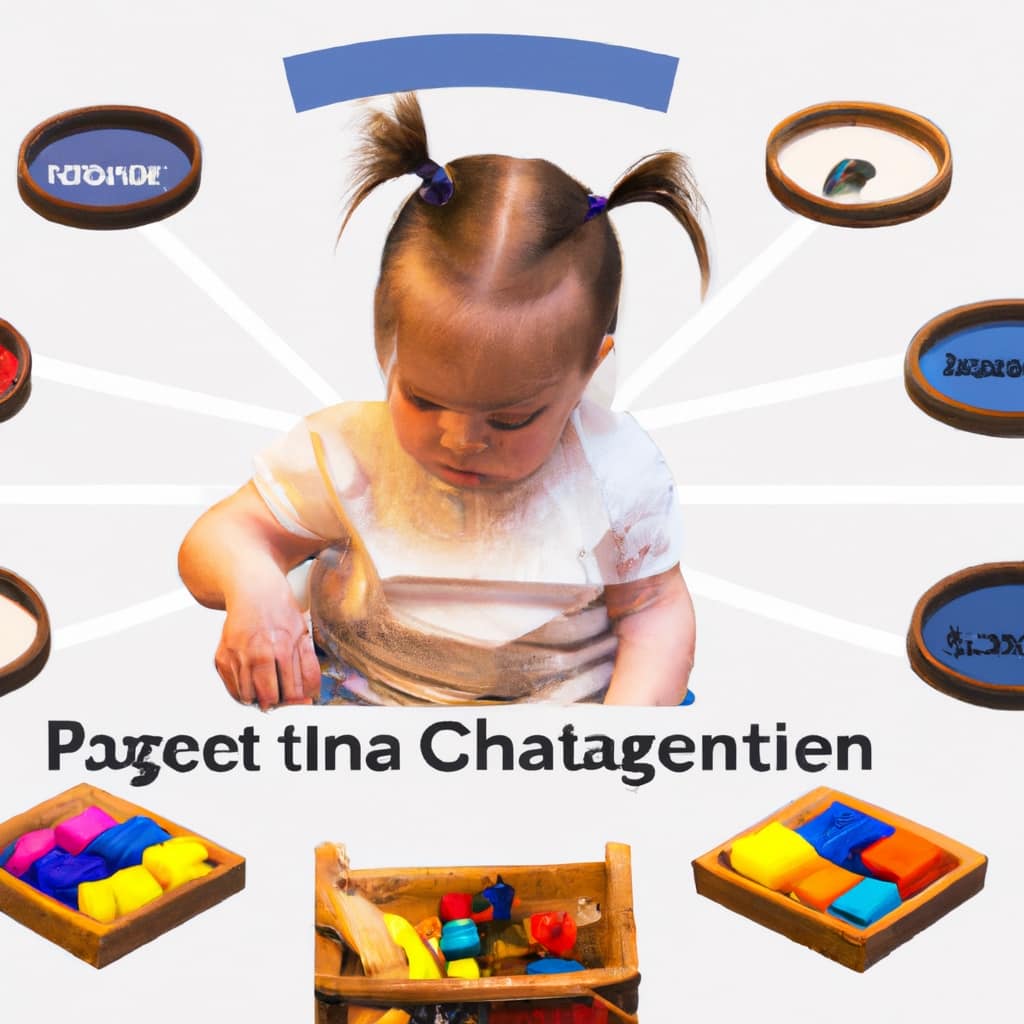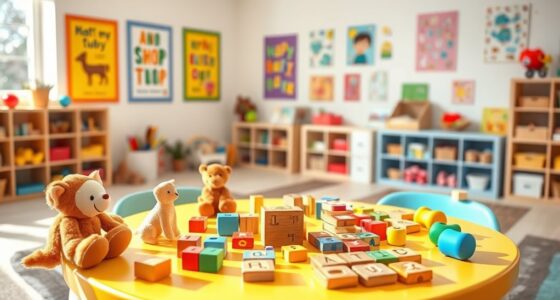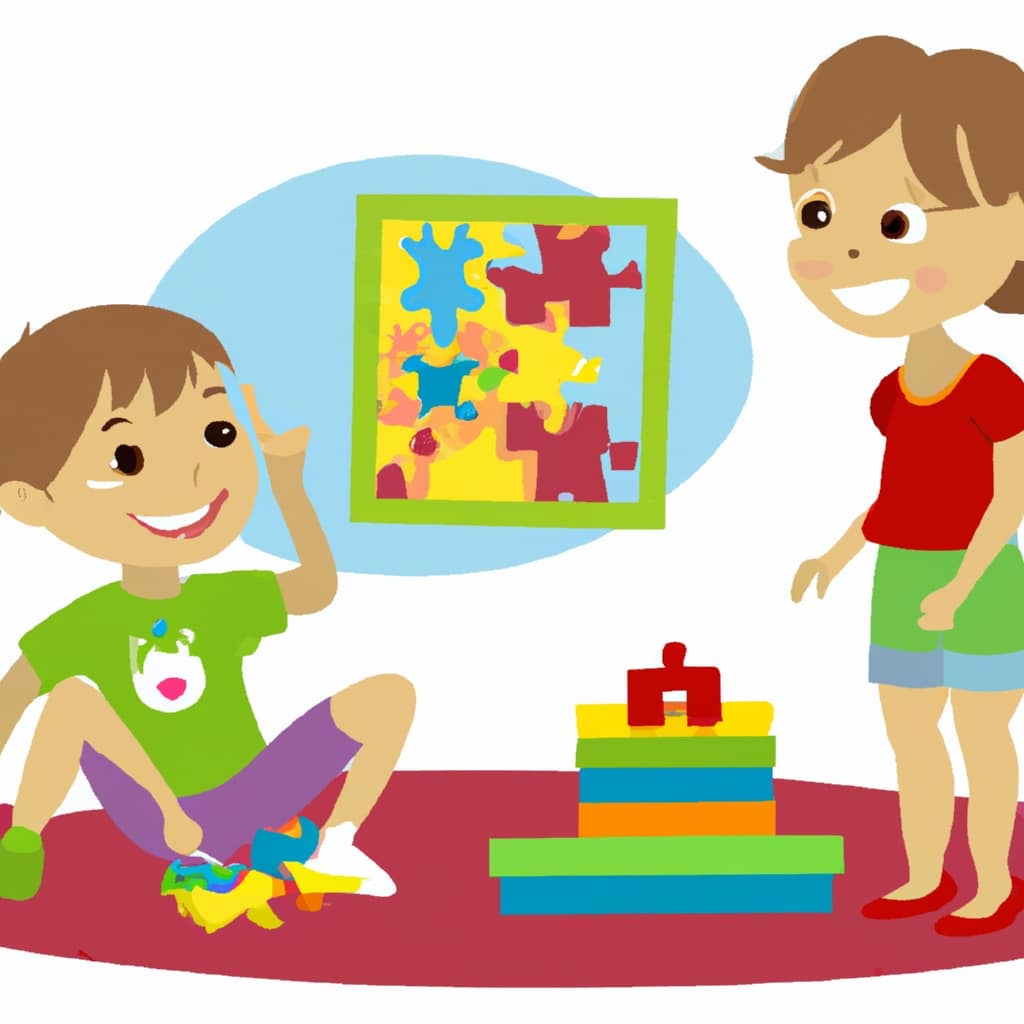Are you ready to dive into the world of interactive musical toys and discover the incredible benefits they offer for early childhood education? We’ve got you covered!
In this article, we’ll explore why these toys are crucial for your little one’s development.
From enhancing cognitive skills to fostering creativity and social interaction, interactive musical toys offer a unique and engaging learning experience.
So, let’s hit the right note and find out how these toys can make a lasting impact on your child’s education.
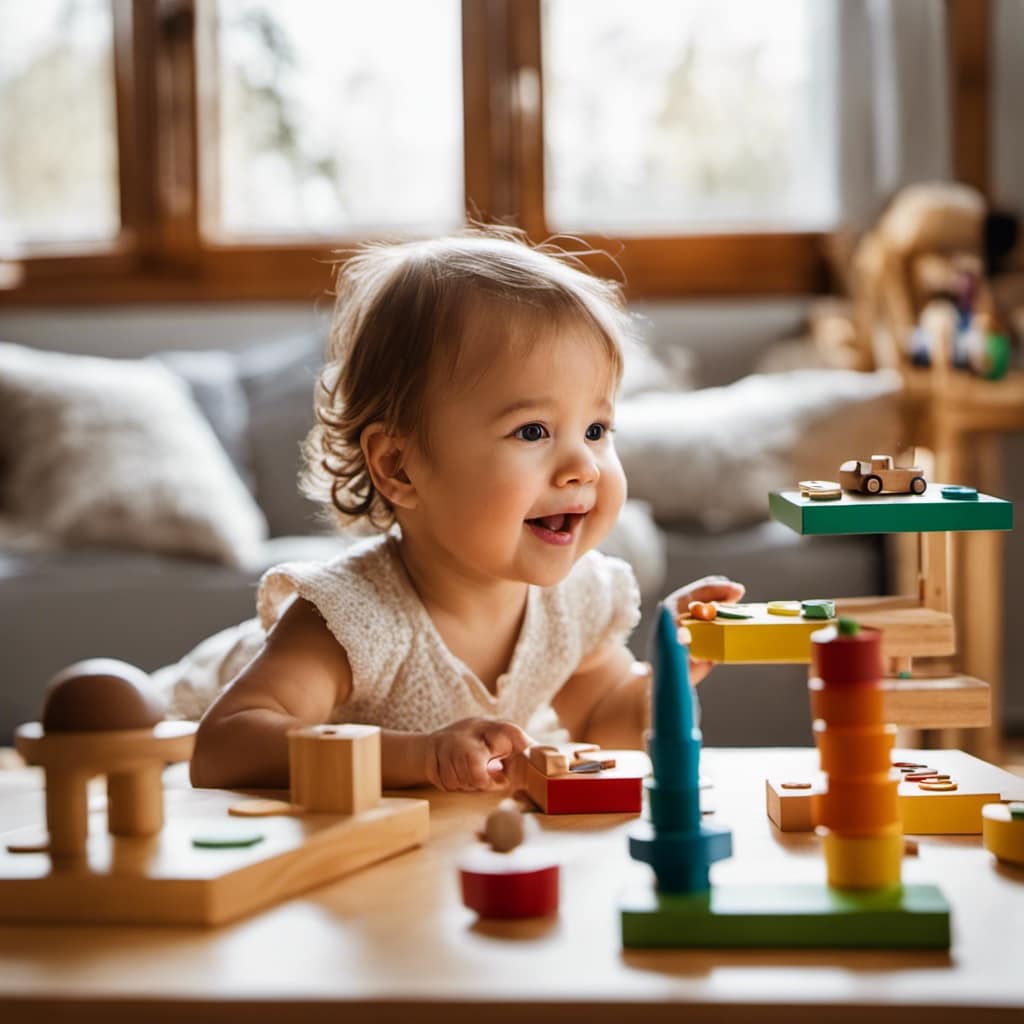
Let’s get started!
Key Takeaways
- Interactive musical toys enhance cognitive skills, memory, attention, and problem-solving abilities in preschoolers.
- These toys foster social interaction, cooperation, emotional development, and self-expression.
- Interactive musical toys encourage active participation, creativity, and collaboration among preschoolers.
- Incorporating music into the preschool curriculum stimulates language, memory, emotional processing, fine motor skills, coordination, listening, and language abilities.
Benefits of Interactive Musical Toys
We have found that interactive musical toys offer numerous benefits for preschool learning. One of the key advantages is their impact on cognitive development. Research has shown that engaging with music stimulates various areas of the brain related to memory, attention, and problem-solving skills. By playing with interactive musical toys, children are actively involved in exploring different sounds, rhythms, and melodies, which enhances their cognitive abilities.
Moreover, these toys encourage social interaction among preschoolers. When children play together with interactive musical toys, they learn to take turns, share, and cooperate with their peers. This fosters important social skills like communication, empathy, and teamwork.
Additionally, music has been linked to positive emotions and can serve as a tool for self-expression, promoting emotional development in young children.

How Interactive Musical Toys Enhance Learning
To understand how interactive musical toys enhance learning, let’s explore their role in developing essential cognitive and social skills in preschoolers.
Music therapy for preschoolers has been shown to have a positive impact on cognitive development, and interactive musical toys play a significant role in this process. These toys engage children in various activities that promote learning, such as singing, dancing, and playing instruments. The interactive nature of these toys encourages active participation, allowing children to develop their creativity, imagination, and problem-solving skills.
Additionally, these toys foster social interaction, as children can play together and collaborate in creating music. Research has also shown that music has a positive effect on memory and language skills in young children.
With these benefits in mind, let’s now explore the top interactive musical toys for preschoolers.
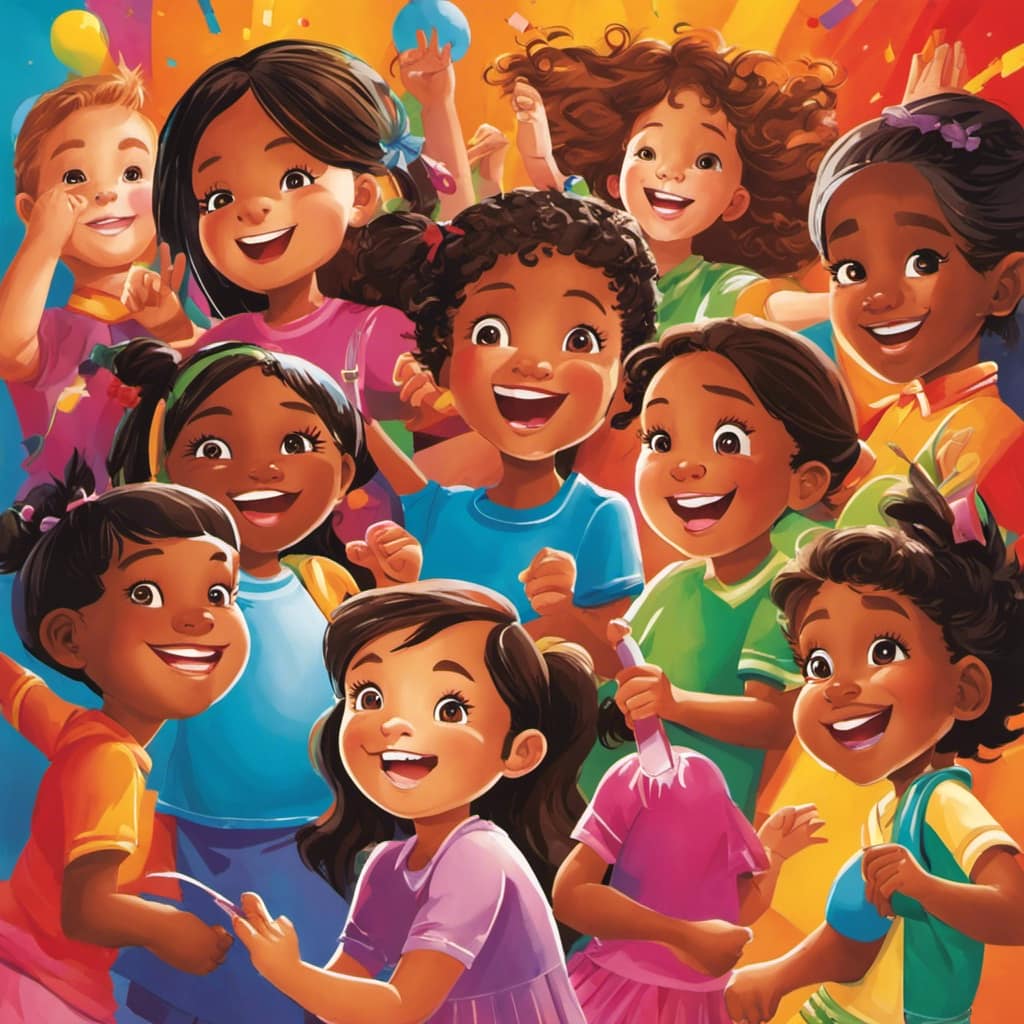
Top Interactive Musical Toys for Preschoolers
Now let’s explore some of the top interactive musical toys that are crucial for preschoolers’ learning. These toys not only provide entertainment but also play a significant role in cognitive development.
Here are four popular interactive musical toys for preschoolers:
-
LeapFrog Learn and Groove Musical Mat: This interactive mat combines music and movement to engage children in learning numbers, letters, and shapes.
-
VTech KidiBeats Kids Drum Set: With this drum set, preschoolers can explore different beats and rhythms, enhancing their musical creativity and coordination skills.

-
Fisher-Price Think & Learn Rocktopus: This interactive toy introduces preschoolers to different musical styles and allows them to create their own tunes, fostering their imagination and problem-solving abilities.
-
Melissa & Doug Band-in-a-Box: This set includes various musical instruments like tambourine, maracas, and xylophone, encouraging preschoolers to explore different sounds and develop their auditory skills.
Incorporating Music Into Preschool Curriculum
As educators, it’s essential to incorporate music into the preschool curriculum to further enhance children’s cognitive development through interactive musical toys. Music plays a vital role in early childhood development as it stimulates various areas of the brain, including language, memory, and emotional processing. By integrating music into daily preschool activities, we can create a rich and engaging learning environment for young children.
There are several strategies for incorporating music into the preschool curriculum. First, we can introduce musical instruments and encourage children to explore different sounds and rhythms. This helps develop their fine motor skills and coordination.

Second, we can incorporate music into storytelling, using songs and chants to enhance the narrative. This helps children develop their listening skills and language abilities.
Third, we can organize music and movement activities, such as dancing and singing games, to promote physical development and social interaction.
Choosing the Right Interactive Musical Toy
When selecting interactive musical toys for preschool learning, we consider the specific needs and interests of our students.
Here are four factors we take into account when choosing the right interactive musical toy for toddlers:
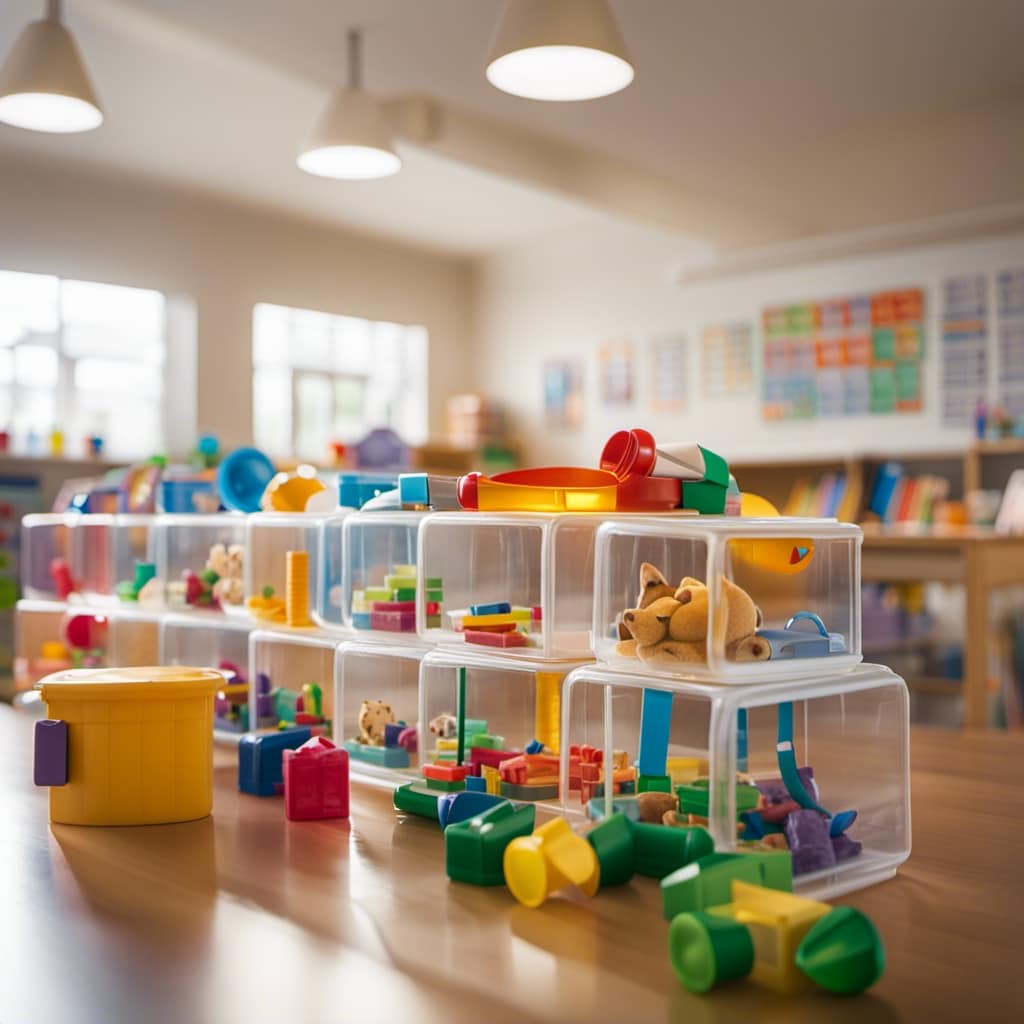
-
Age-appropriate features: It’s crucial to choose a toy that’s suitable for the child’s age and developmental stage. Look for toys that offer different levels of interaction and complexity to keep them engaged and challenged.
-
Multi-sensory experience: The best interactive musical toys provide a multi-sensory experience by incorporating visuals, sounds, and tactile elements. This helps enhance the child’s learning and stimulates their senses.
-
Educational value: Look for toys that offer educational benefits, such as introducing letters, numbers, shapes, and colors. Toys that encourage problem-solving, creativity, and musical exploration are also beneficial for preschoolers.
-
Durability and safety: Ensure that the toy is made of high-quality materials, free from any harmful substances, and durable enough to withstand rough play. Check for age recommendations and safety certifications to ensure the toy meets the necessary standards.
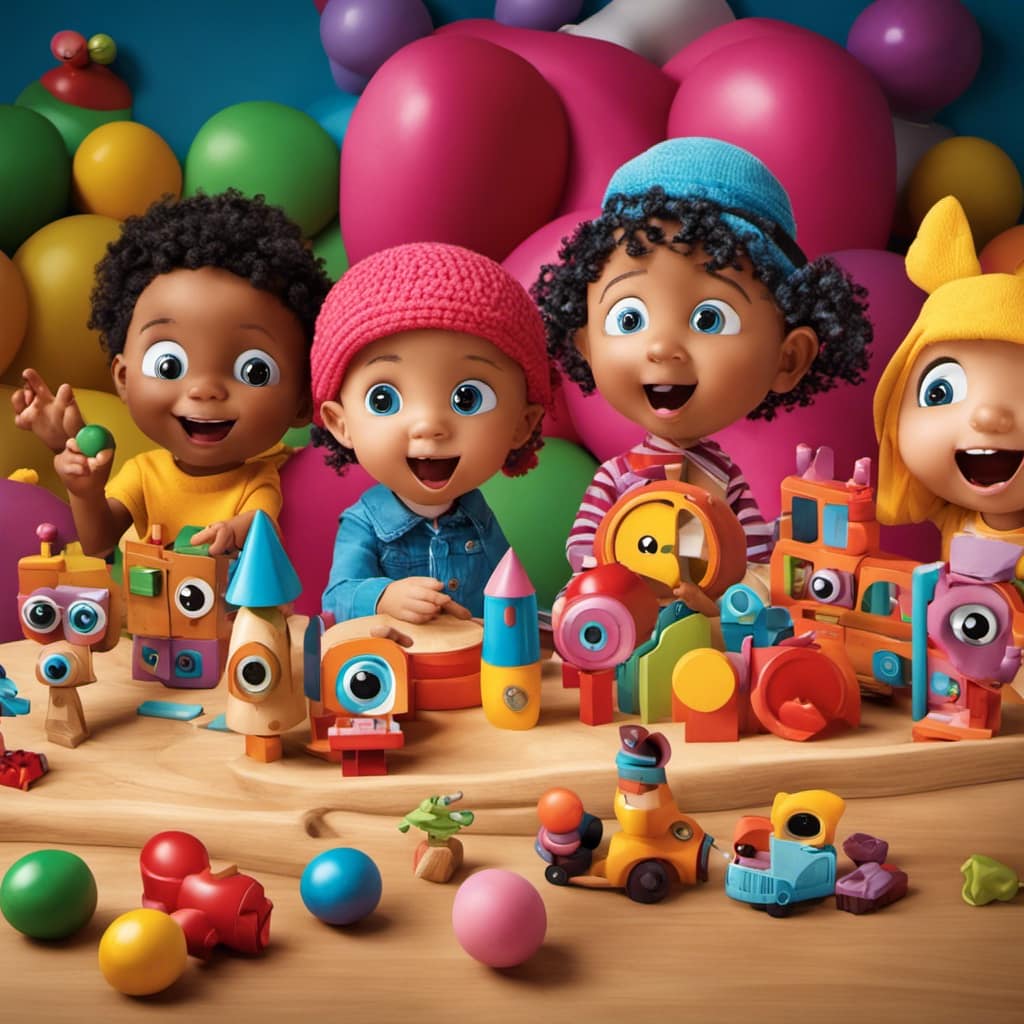
Frequently Asked Questions
How Do Interactive Musical Toys Benefit Children With Special Needs?
Interactive musical toys benefit children with special needs by providing sensory stimulation and promoting cognitive development. They engage and captivate children, helping them to improve their communication, social skills, and overall well-being.
Can Interactive Musical Toys Help Improve a Child’s Language Development?
Yes, interactive musical toys can help improve a child’s language development by promoting language acquisition and cognitive development. Research shows that engaging with music enhances language skills and supports overall learning in preschoolers.
Are There Any Interactive Musical Toys That Can Promote Social Skills in Preschoolers?
Yes, there are interactive musical toys that promote social skills in preschoolers. These toys encourage collaboration among children and foster creativity and imagination through the use of musical instruments.
How Can Interactive Musical Toys Contribute to the Development of Fine Motor Skills in Preschoolers?
Interactive musical toys contribute to the development of fine motor skills in preschoolers by improving hand-eye coordination and enhancing finger dexterity. They engage children in fun and interactive activities that promote physical and cognitive development.
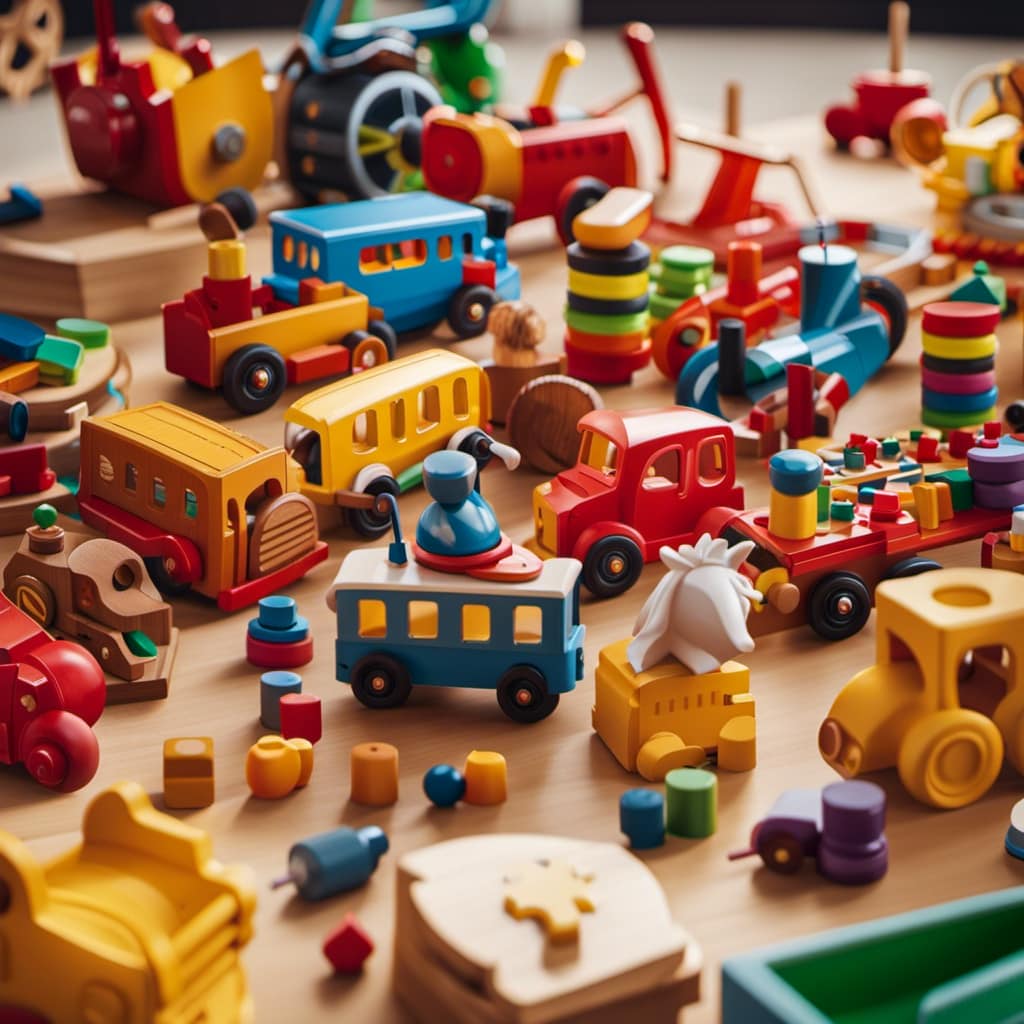
What Are Some Safety Considerations When Selecting Interactive Musical Toys for Preschoolers?
When selecting interactive musical toys for preschoolers, it’s important to consider toy safety and choose age appropriate toys. We want to make sure they are engaged, learning, and having fun in a safe environment.
Conclusion
In conclusion, interactive musical toys are absolutely essential for preschool learning. Without them, children’s minds would remain stagnant, devoid of any joy or creativity. These toys not only enhance learning but also bring sheer delight to young hearts.
So, let’s not deny our little ones the pleasure of exploring rhythm and melody. Let’s embrace the chaos of toy pianos and tambourines, for in their cacophony lies the symphony of early childhood education.
